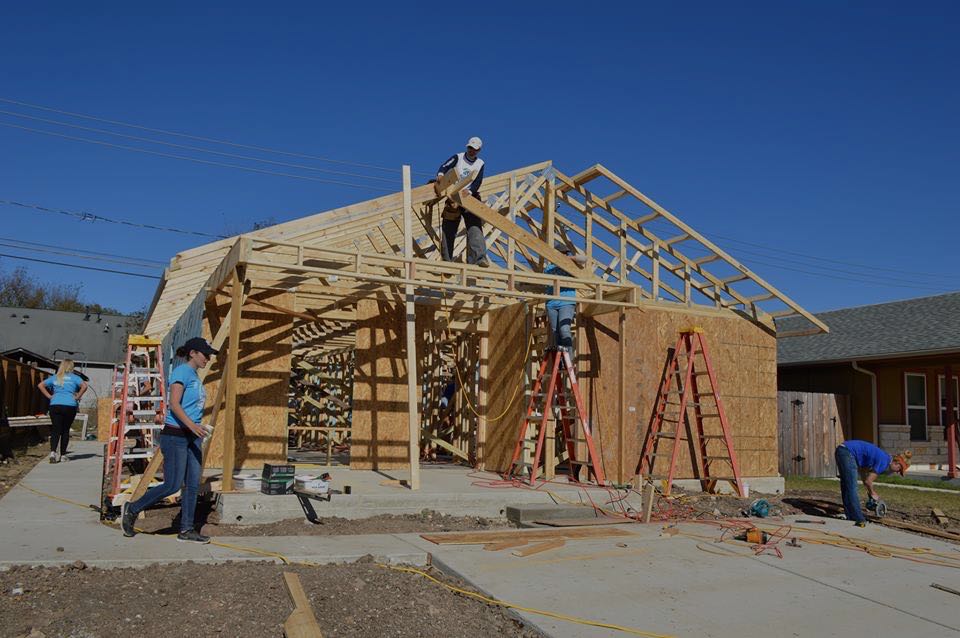Guest Post – from Austin Habitat for Humanity
This editorial was written by Phyllis Snodgrass, CEO of Austin Habitat for Humanity. It was originally published just before the release of the CodeNEXT draft.
If we look back at our city’s history, it’s easy to identify a few monumental changes that helped create the Austin we know today. Think of the damming of the Colorado River, or the building of the I-35 corridor. At the time, we knew these things would greatly impact Austin, but likely could not have fully envisioned how they would shape the future of our city.
The incredible achievements of Austin have also led to its incredible hindrance – population growth has pushed the limits of our housing supply to the point where we describe housing affordability in our city not as attainable, but rather as something in “crisis.”
This is why Austin, as a community, should take advantage of the opportunity CodeNEXT will present to make substantial progress towards creating affordability.
CodeNEXT is the name of the undertaking the City of Austin has embarked upon to rewrite the local Land Development Code. While the code has not been rewritten since 1984, the city certainly has changed. The metro population has swelled, and due to cultural and economic shifts, more and more people would prefer to live in walkable places closer to work and community assets rather than spend their time commuting. The City recognized this in 2012 when it adopted the phrase, “compact and connected” in its new Comprehensive Plan – Imagine Austin – but the concept has been hindered by an outdated set of policies. This is what we at Austin Habitat for Humanity hope CodeNEXT will do – empower the City and all organizations, developers, and individuals working within it to support that vision.
Austin Habitat for Humanity has evolved to meet the needs of our growing city. As our community changes, so must our building practices. This is why our days of focusing solely on building single family, single story homes are behind us and we are moving toward more “compact and connected” models. However, in order to do this to the best of our ability, our organization needs CodeNEXT to support smarter building policies.
Our hope is that the rewrite of the Land Development Code will lead to a simpler system. We hope to see things like parking minimums and site area requirements relaxed, both of which decrease affordability by limiting the number of homes a property can have on it. We hope the rewrite will harness the market’s power to increase affordability by providing economic based Density Bonus programs, where market-rate developers are incentivized to build more in exchange for community benefits, including affordable housing. Most importantly, however, we hope to see meaningful changes in how the code regulates compatibility.
The current code takes a suburban approach to compatibility. It dictates how many feet a developer can build up, and often results in lost opportunity to build in areas that would foster the “compact and connected” vision of Austin. As an example, Austin Habitat owns a plot of land where, under current code, we could only build 19 affordable units. If compatibility were to be amended, we could build up to 77 units on that same lot – a 305 percent increase in affordable options for Austin residents. Given that Austin already has an estimated shortage of 50,000 affordable units, we cannot afford to continue under today’s restrictive code and continue to see examples such as this one. Many of our peers, like Foundation Communities and LifeWorks, have run into similar obstacles.
When the new Land Development Code is released, we hope to see meaningful changes that will enable more affordable options. As pointed out by Mayor Adler in his State of the City Address, there will be 95,000 new Austin residents by 2020. If our housing stock does not increase at a meaningful pace or in a manner cohesive to density, we’ll find ourselves in much less affordable city three years from now.
We, as an organization, believe that affordability can be more than just a pipedream – it can be a reality by adopting smarter policies. CodeNEXT can be the next monumental change for Austin.



